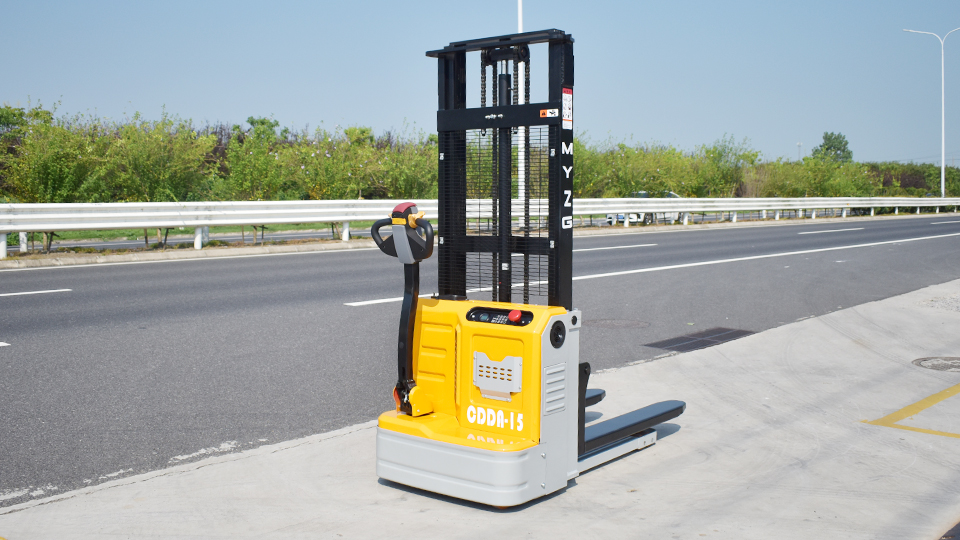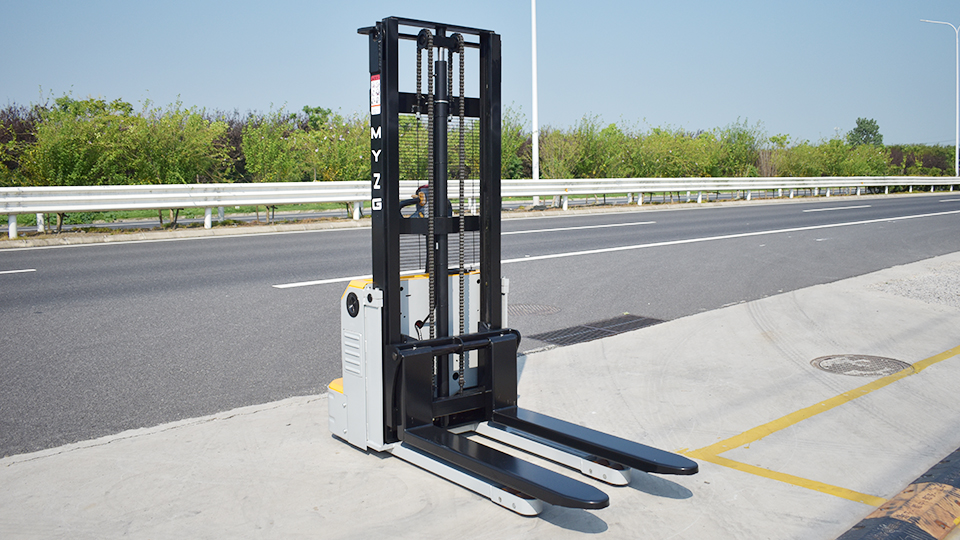
In the intricate dance of modern warehousing, manufacturing, and logistics, efficiency in material handling is paramount. While forklifts often grab the spotlight, another indispensable class of equipment – the stacker – plays a crucial role in optimizing vertical storage and movement of goods, particularly in environments where space is at a premium. Stackers, as their name suggests, are designed primarily for lifting and stacking pallets or other unitized loads, offering a more compact and often more economical alternative to traditional counterbalance forklifts for specific applications.
However, the term "stacker" itself encompasses a diverse range of machines, each engineered to address distinct operational challenges. Understanding the various types of stackers, their mechanisms, and their ideal applications is critical for businesses looking to enhance productivity, improve safety, and maximize storage density. This comprehensive article will delve into the numerous categories of stackers, shedding light on their unique features and best-fit scenarios.
Fundamental Classifications of Stackers
Stackers can be broadly categorized based on their power source and operator position. This forms the foundation for understanding the more specialized types:
Manual Stackers:
Description: These are the most basic and economical stackers. They rely entirely on human power for both lifting and maneuvering. A hydraulic pump, typically operated by a foot pedal or a hand lever, raises the forks, while steering and pushing are done manually.
Mechanism: A manual hydraulic pump connected to a cylinder lifts the mast and forks. The operator pulls or pushes the stacker to move it.
Applications: Ideal for light-duty, infrequent lifting tasks, small warehouses, retail backrooms, and areas with limited space where the investment in powered equipment is not justified. They are suitable for short travel distances and lighter loads (typically up to 1,000-1,500 kg or 2,200-3,300 lbs) and lower lift heights (often up to 3 meters or 10 feet).

Advantages: Low cost, simple to operate and maintain, compact design, no battery charging required, quiet operation.
Disadvantages: Labor-intensive, slow operation, unsuitable for heavy or frequent use, potential for operator fatigue and strain.
Semi-Electric Stackers:
Description: Bridging the gap between manual and fully electric models, semi-electric stackers feature an electric-powered lift but still require manual pushing and steering.
Mechanism: An electric motor powers a hydraulic pump for effortless lifting and lowering of loads. Movement, however, is manual, similar to a manual stacker. They are equipped with a rechargeable battery and an integrated charger.
Applications: Suited for medium-duty applications where frequent lifting is required, but travel distances are relatively short. Common in small to medium-sized warehouses, workshops, and for loading/unloading vehicles where maneuverability is key.
Advantages: Easier and faster lifting than manual stackers, more economical than fully electric models, reduces operator strain from lifting, relatively compact.
Disadvantages: Still requires physical effort for movement, limited travel speed, less efficient for long distances or frequent transport tasks.
Electric Stackers (Fully Powered Stackers):
Description: These stackers are fully powered, meaning both lifting/lowering and travel (drive) are controlled electrically. They are battery-operated and offer significant improvements in efficiency and reduced operator effort.
Mechanism: Equipped with an electric drive motor for propulsion and an electric hydraulic pump for lifting. Controls are typically on a tiller arm or a control panel.
Applications: The most versatile category, suitable for a wide range of tasks in various warehouse sizes, manufacturing facilities, and distribution centers. They are ideal for high-frequency lifting, stacking in racking, and horizontal transport over moderate distances.
Advantages: High efficiency, reduced operator fatigue, faster operation, higher lift capacities and heights compared to manual/semi-electric, quiet and emission-free operation (indoors).
Disadvantages: Higher initial cost than manual/semi-electric, requires battery charging infrastructure, larger footprint than manual models.
Specialized Types of Electric Stackers (Based on Configuration & Operator Position)
Within the "Electric Stacker" category, further specialization occurs based on their structural design and how the operator interfaces with the machine:
Walkie Stackers (Pedestrian Stackers):
Description: These are the most common type of electric stacker where the operator walks alongside and steers the unit using a tiller arm. They do not have a dedicated operator platform or cabin.
Mechanism: Operator walks behind the tiller arm, which houses controls for lift, lower, and drive.
Applications: Excellent for tight spaces, narrow aisles, and operations where the operator needs to dismount frequently for picking or other tasks. Suitable for short to medium travel distances.
Advantages: Highly maneuverable, compact, relatively low cost, good visibility around the unit.
Disadvantages: Operator fatigue over long distances, slower travel speeds compared to rider models.
Walkie Straddle Stackers:
Description: A specific type of walkie stacker characterized by wide "straddle" legs that extend around the sides of the pallet. These legs provide stability and allow the forks to lower flush to the ground outside the footprint of the pallet.
Mechanism: The straddle legs distribute the load weight and allow the forks to pick up various pallet types (including closed-bottom pallets, like Euro pallets, which cannot be picked up by conventional stackers with load wheels under the forks).
Applications: Ideal for handling a variety of pallet sizes, including non-standard or closed pallets, and for maximizing storage density by allowing pallets to be placed closer together. Commonly used in warehousing and manufacturing.
Advantages: Versatile with pallet types, excellent stability, good for high-density storage.
Disadvantages: Requires wider aisles than conventional walkie stackers due to the straddle legs.
Walkie Counterbalance Stackers:
Description: Unlike most stackers that use outriggers or straddle legs, counterbalance stackers use a heavy counterweight at the rear of the machine to offset the weight of the load being lifted, much like a traditional counterbalance forklift. This eliminates the need for front support legs.
Mechanism: A heavy counterweight (usually integrated into the chassis) provides stability. Forks extend directly from the main body, allowing the stacker to approach and pick up any type of pallet directly from the floor or racking, similar to a forklift.

Applications: Best for handling closed pallets, trailers, and applications where the presence of straddle legs would interfere with the load or racking. Suitable for environments requiring more flexibility in pallet handling.
Advantages: Can handle any pallet type (open or closed), excellent maneuverability in tight spots due to no straddle legs, good for loading/unloading trucks.
Disadvantages: Heavier and less compact than straddle stackers due to the counterweight, higher initial cost.
Rider Stackers (Platform Stackers / Stand-On Stackers):
Description: These stackers feature a folding or fixed platform on which the operator can stand during operation, allowing for faster travel speeds and reduced fatigue over longer distances.
Mechanism: Similar to walkie stackers in their lifting and driving components, but with an added operator platform and more sophisticated controls for riding. Some may also have straddle or counterbalance designs.
Applications: Suited for larger warehouses or facilities where goods need to be transported over longer distances between stacking points, or for multi-shift operations where operator comfort is critical.
Advantages: Faster travel speeds, reduced operator fatigue for horizontal transport, higher productivity for certain applications.
Disadvantages: Larger footprint than walkie models, higher initial cost, may require wider aisles than purely walkie versions.
Reach Stackers (Internal Mast Reach Stackers):
Description: Often considered a hybrid between a stacker and a reach truck, these stackers feature a mast that can extend forward (reach) to pick up or deposit loads beyond the machine's wheelbase. This allows for deeper racking access. It's important to distinguish these from "Reach Stackers" used for intermodal container handling, which are much larger machines.
Mechanism: Equipped with a pantograph or sliding mast system that allows the forks to extend forward and retract. They typically have straddle legs for stability.
Applications: Ideal for double-deep racking systems, very narrow aisle (VNA) applications where space optimization is critical, and high-density storage. They excel in environments where precise placement and deep reach are necessary.
Advantages: Excellent space utilization, can access deeper racking, high lifting heights.
Disadvantages: More complex and expensive than standard stackers, requires highly skilled operators, can be less maneuverable in extremely tight spaces when fully extended.
Mono-Mast Stackers:
Description: Characterized by a single, central mast rather than the more common dual-mast design.
Mechanism: The single mast often offers enhanced visibility for the operator.
Applications: Typically used for lighter loads and lower lift heights where clear forward visibility is paramount, such as in retail environments or order picking.
Advantages: Improved visibility, often more compact.
Disadvantages: Generally lower lifting capacities and heights compared to dual-mast designs.
Other Important Distinctions and Considerations
Beyond the main types, several other factors differentiate stackers:
Fixed Mast vs. Telescopic Mast:
Fixed Mast: The mast height is constant, limiting lift height. Simple design.
Telescopic Mast: The mast extends upwards in sections, allowing for much greater lift heights within a compact frame. Most modern stackers use telescopic masts.
Fork Configuration:
Fixed Forks: Forks are permanently attached.
Adjustable Forks: Forks can be manually or hydraulically adjusted for width to accommodate different pallet sizes.
Load Capacity & Lift Height: These are critical specifications that vary widely across all types of stackers, from small manual units lifting a few hundred kilograms to heavy-duty electric models capable of lifting several tons to significant heights.
Battery Type: Lead-acid batteries are common, but lithium-ion batteries are gaining popularity due to their longer lifespan, faster charging, and opportunity charging capabilities.
Control Systems: Basic stackers have simple lever controls, while advanced electric models may feature proportional controls for precise lifting and lowering, as well as ergonomic tiller heads with integrated safety features.
Choosing the Right Stacker
Selecting the appropriate stacker type requires a thorough assessment of an operation's specific needs, including:
Load Weight and Size: What are the typical dimensions and weights of the pallets or loads?
Lift Height Requirements: How high do loads need to be lifted for racking or stacking?
Aisle Widths: How wide are the operating aisles? This directly impacts the viability of straddle vs. counterbalance designs.
Pallet Type: Are you exclusively using open-bottom pallets, or do you need to handle closed-bottom or non-standard pallets?
Travel Distance & Frequency: How far do loads need to be transported, and how often? This influences the choice between walkie and rider models.
Operating Environment: Is it indoors or outdoors? Are there any floor surface limitations? What are the noise and emission requirements?
Budget: Initial purchase cost, ongoing maintenance, and energy consumption all contribute to the total cost of ownership.
Operator Ergonomics & Training: Considerations for operator comfort, ease of use, and the level of training required.
Conclusion
Stackers, in their various forms, are versatile and indispensable tools in modern material handling. From the simplicity of a manual hand stacker used for occasional lifts to the advanced capabilities of a rider reach stacker optimizing high-density storage, each type serves a distinct purpose. By carefully evaluating operational demands and understanding the unique features and advantages of each stacker category, businesses can make informed decisions that lead to safer, more efficient, and more productive warehouse and logistics operations. The continuous evolution of stacker technology, particularly in electric and automated variants, promises even greater versatility and performance in the future.
Name: selena
Mobile:+86-13176910558
Tel:+86-0535-2090977
Whatsapp:8613181602336
Email:vip@mingyuforklift.com
Add:Xiaqiu Town, Laizhou, Yantai City, Shandong Province, China